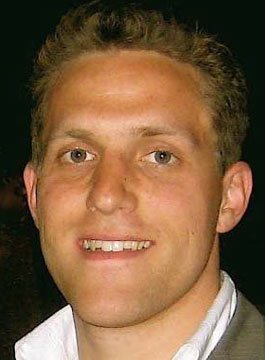Dr Ed Coats is a South Pole Adventurer, Decathlete and Motivational Speaker
For his day job, Ed is an Obstetrician, Gynaecologist and IVF doctor.
In 2009 he joined James Cracknell and Ben Fogle on the first-ever race to the South Pole, the first attempt of its kind since Amundsen beat Captain Scott in 1912.
Ed completed a two-day selection course to win his place on the expedition team beating over 650 applicants, filmed for a 5-part TV documentary series for BBC2 called On Thin Ice.
Six teams worldwide took part in what has been billed as the toughest endurance race on the planet. The team raced 500 miles unsupported across Antarctica for 16 hours a day in temperatures as low as -50 degrees Celsius while pulling 80kg sledges behind them. The team raced across crevasse fields while battling blisters, frostbite, hallucinations and pneumonia. They eventually finished in second place, an achievement due in no small part to Ed’s clear-headed support and mediation between his two more experienced teammates.
Before ‘The South Pole Race‘, Dr Ed Coats was no stranger to physical hardship. He is an accomplished swimmer and has successfully led two teams to swim the English Channel. He has represented Great Britain as a track and field decathlete. In 2010 his ’30 at 30′ project saw him attempt thirty adventurous challenges in the UK, including the small matter of a Thames swim, a Coast to Coast race across Scotland and an endurance race on Dartmoor.
Over the last few years, along with Alan Chambers MBE, Ed Coats has helped lead a series of ‘Extreme Classroom’ projects in the High Arctic, Everest Base Camp, and Africa. All were filmed for the BBC and challenged the labels children with behavioural difficulties have, demonstrating that children labelled ‘unteachable’ can be taught with the right approach.
In 2012 Ed helped lead a ski expedition to the ‘Top of The World’, reaching The Geographic North Pole.
Dr Ed Coats – Motivational Speaker:
During his presentations, Ed talks about maximizing performance in new teams and how to develop a cohesive understanding of teams dynamics.
He weighs up individual and collective responsibility in teams and forms efficient and affective bonds.
He looks at the highs and lows of target-focused teamwork, the difficulties that team dynamics can have on different leadership styles, and how both the team, its leaders, and individuals can learn to deal with adversity and challenge.

